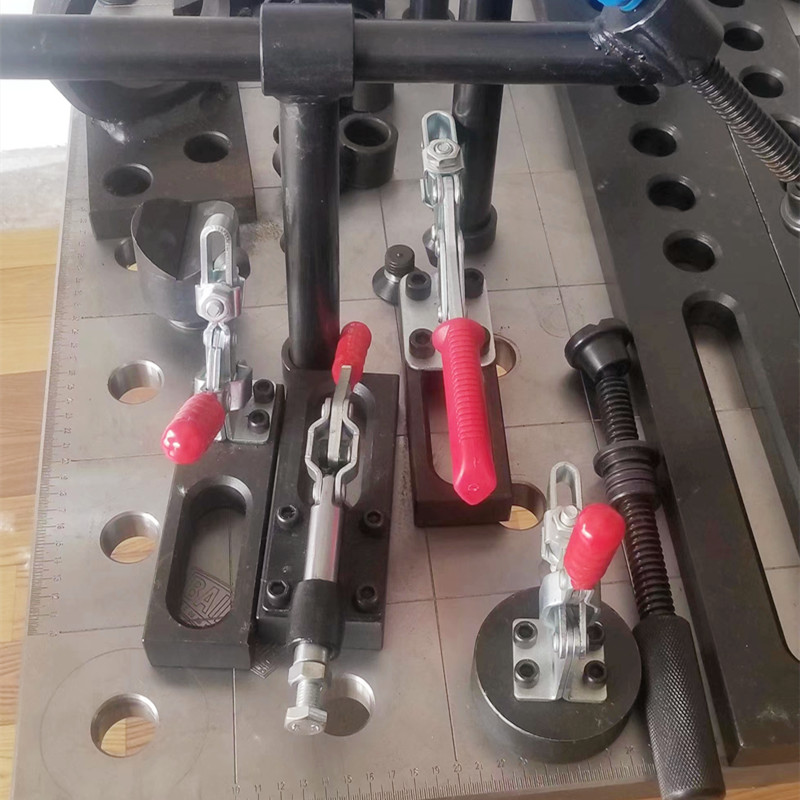Noy . 13, 2024 19:42 Back to list
adjusting a micrometer
Adjusting a Micrometer A Comprehensive Guide
Micrometers are essential precision instruments used in various fields, including engineering, manufacturing, and machining, to measure small distances with great accuracy. Their precision is often critical in applications where millimeter and even micrometer measurements make a significant difference in results. However, to ensure accurate measurements, it's important to know how to properly adjust and calibrate a micrometer. This article aims to provide a comprehensive overview of adjusting a micrometer, covering the tool’s components, the adjustment process, and tips for maintaining accuracy.
Understanding the Micrometer
A micrometer typically consists of several key components the frame, anvil, spindle, thimble, and sleeve. The anvil and spindle are the parts that make contact with the object being measured. The sleeve is marked with a linear scale, while the thimble has a circular scale fitted around it. The micrometer works on the principle of a screw mechanism, where rotating the thimble moves the spindle towards or away from the anvil. Each complete revolution of the thimble moves the spindle by a precise distance, allowing for highly accurate measurements.
Why Adjust a Micrometer?
Adjustment may be necessary for several reasons, including wear and tear, temperature changes, or prior misuse. An unadjusted micrometer can lead to inaccurate measurements, which can compromise the quality of the work being performed. Therefore, it’s essential to routinely check and adjust the micrometer to ensure it remains within its specifications.
Steps for Adjusting a Micrometer
1. Inspect the Micrometer Before making any adjustments, visually inspect the micrometer for any signs of damage or wear. Ensure that the anvil and spindle are clean and free of debris. Any dirt or grease can affect measurements.
2. Zeroing the Instrument Place the micrometer in a closed position by bringing the anvil and spindle together gently. This position should ideally read zero on the scale. If it doesn’t, adjustments are required.
adjusting a micrometer

3. Making Adjustments - Using the Calibration Screw Many micrometers come equipped with a calibration screw, typically located on the thimble. Use a small wrench to loosen the calibration screw. Once loosened, rotate the thimble until the reading is at zero. - Tightening the Screw After successfully aligning the zero reading, tighten the calibration screw while ensuring that the thimble remains in place. Double-check the alignment after tightening, as adjustments may cause slight shifts.
4. Check for Backlash After calibration, it’s crucial to assess and account for backlash, which occurs when there is a gap between the spindle and the thimble. This can lead to additional discrepancies in measurements. To test for backlash, gently move the thimble back and forth while observing the scale. If there is significant gap movement, further adjustments may be needed.
5. Recalibrate Regularly It’s vital to perform regular recalibrations. Frequent use, environmental conditions, or accidental impacts can lead to misalignments. A good practice is to calibrate the instrument at the beginning of each workday to maintain accuracy throughout.
Tips for Maintaining Accuracy
- Store Properly Always store the micrometer in its protective case to prevent physical damage. Extreme temperatures and humidity can also affect the precision of the instrument, so a controlled environment is ideal. - Use Proper Technique When measuring, apply consistent and gentle pressure to avoid distorting the object or damaging the micrometer. Avoid dropping or allowing the tool to come into contact with hard surfaces to prevent damage.
- Regular Cleaning Keep the anvil and spindle clean to ensure accurate measurements. Use a soft, dry cloth to wipe these components, and avoid the use of solvents that might introduce contaminants.
Conclusion
Adjusting a micrometer is a crucial skill that significantly impacts the precision of measurements in various fields. By understanding the components and the adjustment process, as well as following the tips for maintaining accuracy, you can ensure that your micrometer continues to provide reliable results. Regular check-ups and proper handling will not only prolong the lifespan of the instrument but also enhance the quality of work produced. Emphasizing these practices will undoubtedly lead to improved accuracy and efficiency in your measurement tasks.
-
thread-plug-gauge-our-promise-of-measurement-excellenceNewsAug.22,2025
-
gauge-pin-class-reflecting-quality-legacyNewsAug.22,2025
-
check-valve-types-for-high-rise-buildingsNewsAug.22,2025
-
water-control-valve-for-irrigation-systemsNewsAug.22,2025
-
gate-valve-with-soft-seal-technologyNewsAug.22,2025
-
y-type-strainer-for-oil-and-gas-applicationsNewsAug.22,2025
Related PRODUCTS









